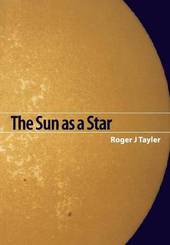
|
The Sun as a Star
Paperback / softback
Main Details
| Title |
The Sun as a Star
|
| Authors and Contributors |
By (author) Roger John Tayler
|
| Physical Properties |
| Format:Paperback / softback | | Pages:256 | | Dimensions(mm): Height 246,Width 173 |
|
| Category/Genre | Solar system |
|---|
| ISBN/Barcode |
9780521468374
|
| Classifications | Dewey:523.7 523.7 523.7 |
|---|
| Audience | | Tertiary Education (US: College) | |
|---|
| Illustrations |
6 Tables, unspecified; 3 Halftones, unspecified; 81 Line drawings, unspecified
|
|
Publishing Details |
| Publisher |
Cambridge University Press
|
| Imprint |
Cambridge University Press
|
| Publication Date |
7 November 1996 |
| Publication Country |
United Kingdom
|
Description
As our nearest star, the Sun offers a unique opportunity to study stellar physics in action. Following the success of his previous books, Galaxies and The Stars, Roger Tayler presents the first full picture of how studies of the Sun and the solar system help us understand stars in general and other planetary systems. Using mathematics appropriate for advanced undergraduate students in physics, this textbook provides a broad and wide-ranging introduction to the Sun as a star. Succinct derivations of key results - such as the properties of spectral lines, the theory of stellar oscillations, plasma physics, magnetohydrodynamics and dynamo theory - are provided in a number of handy appendices, ensuring that the book is completely self contained. Altogether, this is an invaluable textbook for students studying the Sun, stars, the solar-terrestrial environment and the formation of planetary systems.
Reviews'The wealth of data on the Sun makes for rich pickings, and Roger Tayler has not stinted on The Sun as a Star ... The book is accurately pitched at the second and third-year university student, concentrating on those aspects of solar physics that help us to understand stars in general ... The Sun as a Star clearly originates from a university lecture course. But Tayler has steered well away from the prosaic: what remains is a good, sharp, textbook.' David Hughes, New Scientist
|